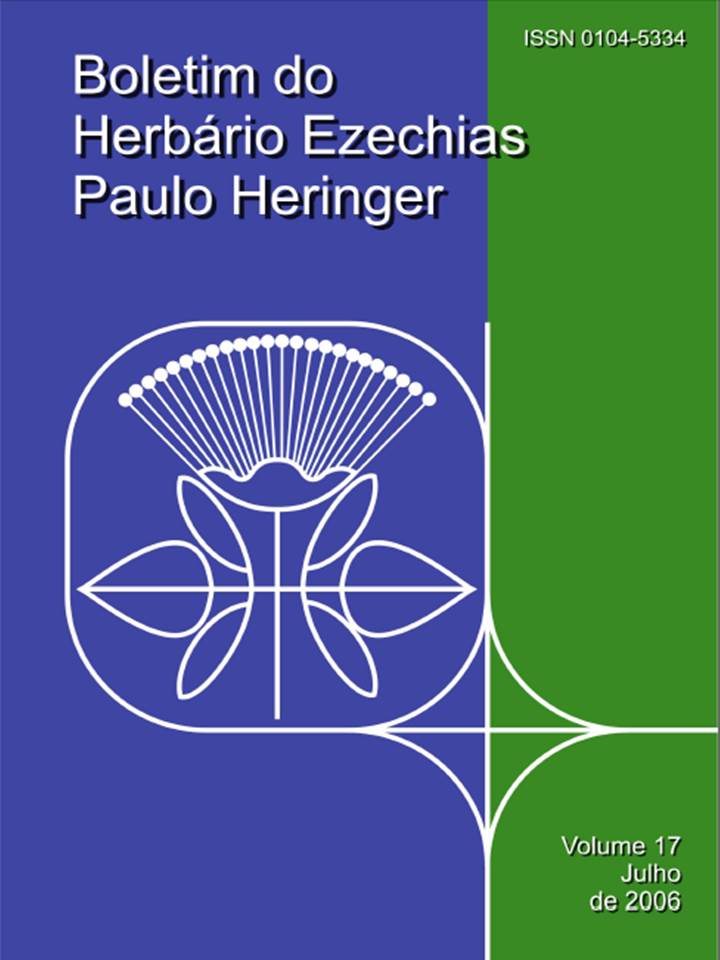COMPOSIÇÃO FLORÍSTICA E FITOSSOCIOLOGIA DAS COMUNIDADES LENHOSAS DO CERRADO SENTIDO RESTRITO EM DUAS POSIÇÕES TOPOGRÁFICAS NO JARDIM BOTÂNICO DE BRASÍLIA, DF.
Resumo
Fitossociologia do cerrado sentido restrito de Interflúvio e Vale na EEJBB) - Em escala local, a topografia influencia a profundidade do lençol freático e associada a outros fatores edáficos, como drenagem e fertilidade do solo, constituem alguns dos fatores determinantes da composição florística e estrutura do cerrado sentido restrito. O presente estudo teve por objetivo verificar a composição florística e a fitossociologia da vegetação lenhosa do cerrado sentido restrito em duas posições com um gradiente de topografia, Interflúvio (I) e Vale (V), na Estação Ecológica do Jardim Botânico de Brasília, DF. Para tanto, foram avaliadas parcelas permanentes na área I (10 parcelas) e V (5 parcelas), com dimensões de 20 x 50m, para amostragem de todos os indivíduos com DB (30cm) < 5cm. Os resultados mostraram que a topografia e sua influência em outros fatores ambientais, aparentemente, contribui na distribuição de algumas das populações que compõem as comunidades lenhosas do cerrado sentido restrito de Interflúvio e Vale. As densidades e áreas basais estimadas foram respectivamente para I e V de 1.388 e 1.090 ind. ha-1 e 9,69 e 6,14 m2.ha-1 As diferenças foram salientadas pelos parâmetros fitossociológicos que mostraram como espécie mais importante no I Ouratea hexasperma, e no V Eriotheca pubescens, revelando comunidades florísticas distintas associadas s duas posições topográficas, Interflúvio e Vale.
Palavras chave: Árvores, Topografia, Estrutura fitossociológica, Densidade, Área basal, Jardim Botânico de Brasília.
PHYTOSOCIOLOGY OF THE CERRADO SENSU STRICTO OF THE INTERFLUVIAL AND VALLEY SLOPE AREAS IN THE EE JBB
ABSTRACT - On a local scale, topography and its influence on the water table levels and soil properties are some of the most important determinants of the cerrado sensu stricto vegetation in Central Brazil. This study assessed differences in the floristic composition and phytosociology of the woody vegetation of the cerrado sensu stricto at two points on a topographic gradient, Interfluvial (I) and Valley Slope (V), in the Ecological Station of the Brasília Botanic Garden, Federal District, Brazil. A total of 10 permanent plots, measuring 20 x 50 m, were located in the I area and 5 in the V area, to survey individuals with BD(30cm) 3 5cm. Results have shown that topography and its influence on other environmental factors apparently contribute to the distribution of populations which compose the cerrado sensu stricto vegetation woody communities. Density and basal area were estimated as 1388 e 1090 ind.ha-1 and 9.69 e 6.14 m2.ha-1, respectively for I and V areas. Phytosociological analysis indicated Ouratea hexasperma as the most important species in the I area, while Eriotheca pubescens was the most important in the V area, revealing distinct floristic communities associated with the two topographic positions, Interfluvial and Valley slope.
Key words: Trees, Topography, Phytosociology, Density, Basal area, Brazil, Botanic Garden of Brasília.


